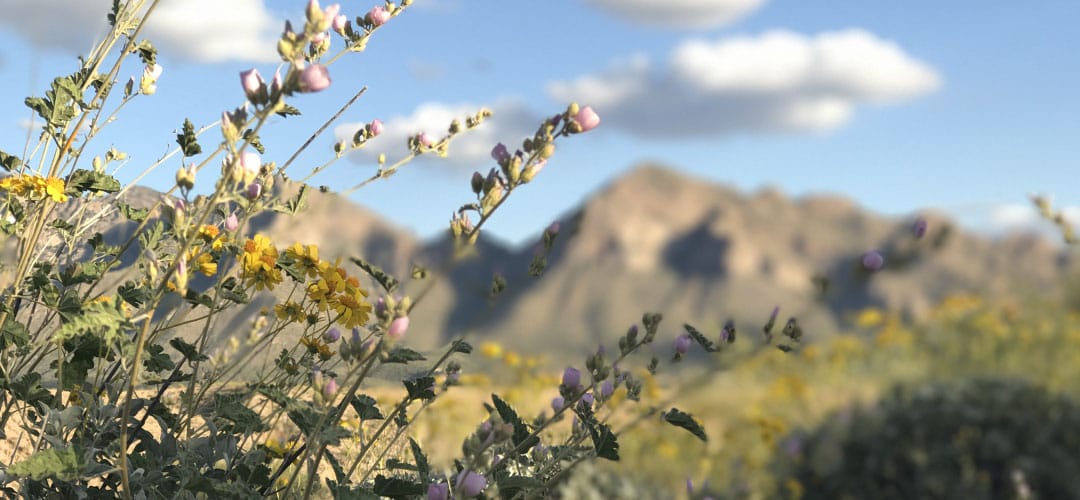What To Do In Your Tucson-area Yard In March
Is there are more spectacular time than March to live in Southern Arizona? Most of the rest of the country is wishing winter was over and seeing forecasts of blizzards and below-freezing temperatures, while we are smack in the midst of our spring season. Temperatures are rising, the chance of frost is past (at least by the middle of this month), and plants are blooming all over town!
Take advantage of plant sales!
Many garden centers, arboretums, and nurseries have plant sales this month, so keep an eye out for those! To help you find the best deals, we’ve put together this list of Tucson spring plant sales.
Watch for wildflowers
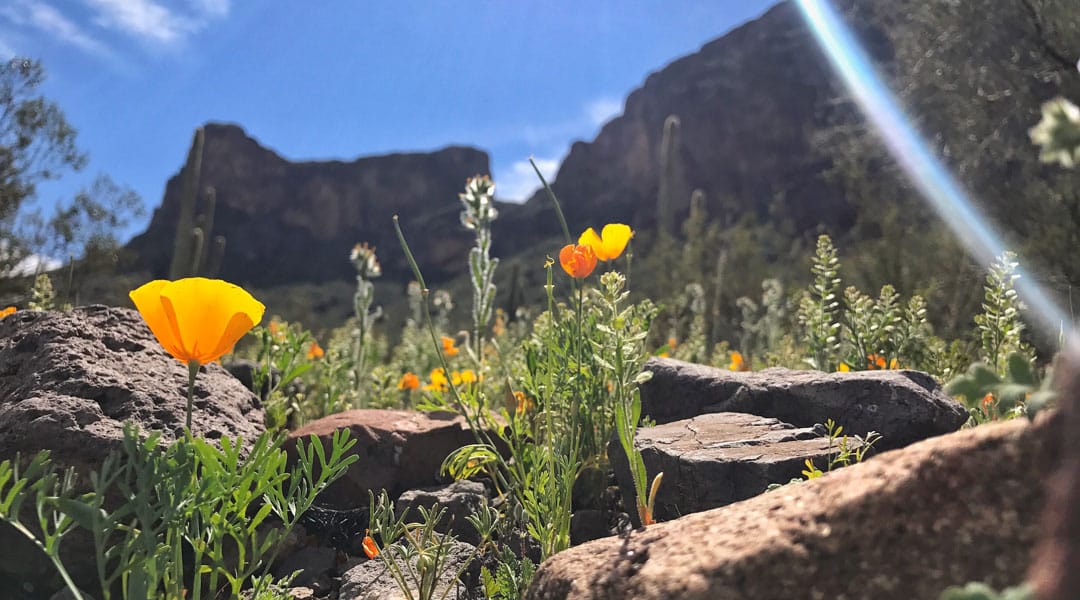
Wildflowers, like these California poppies near Picacho Peak, appear in February and March
Wildflowers begin to bloom in the Tucson area in February, and by March there should be quite the display. California poppies and blue lupine are the most common, but the variety of colors and types of wildflowers can swivel your head all over Tucson.

Nasturtium (not a wildflower but often found blooming in March), desert penstemon and brittlebrush bloom in the Tucson area in March. All will readily grow in your Tucson yard.
If the winter had ample rainfall, the wildflower season will be more prolific (inspiring names for the season like “super bloom”). If we received less winter rainfall than normal, there will be fewer blooms.

Creosote, purple wildflowers, and poppies with other wildflowers in bloom in March in the Tucson area – all are commonly found in parks and public areas.
If you want native wildflowers in your own yard, Native Seeds/SEARCH has this variety for sale.
The general rule of thumb is to scatter the seeds in October or November before the winter rains, but you can scatter the seeds through March.
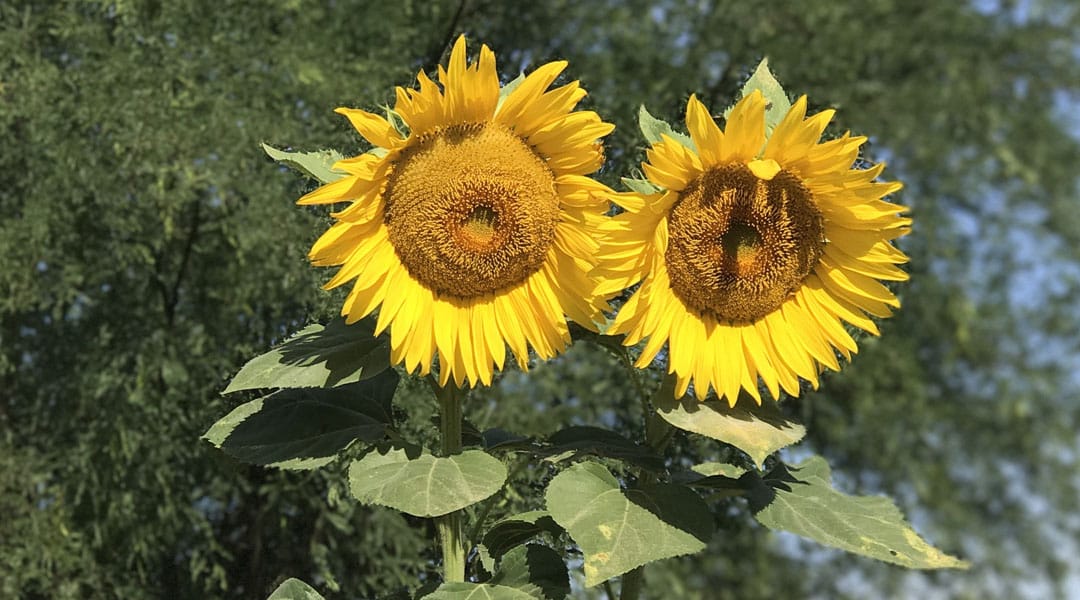
Sunflowers grow in a Tucson yard. Aim to plant them on the west side of your yard to block some of the summer sun.
Sunflowers are also popular to plant this month. They can work well for shading parts of your yard that you don’t want to be fried by the summer sun.
Prune now to remove frost-damaged branches
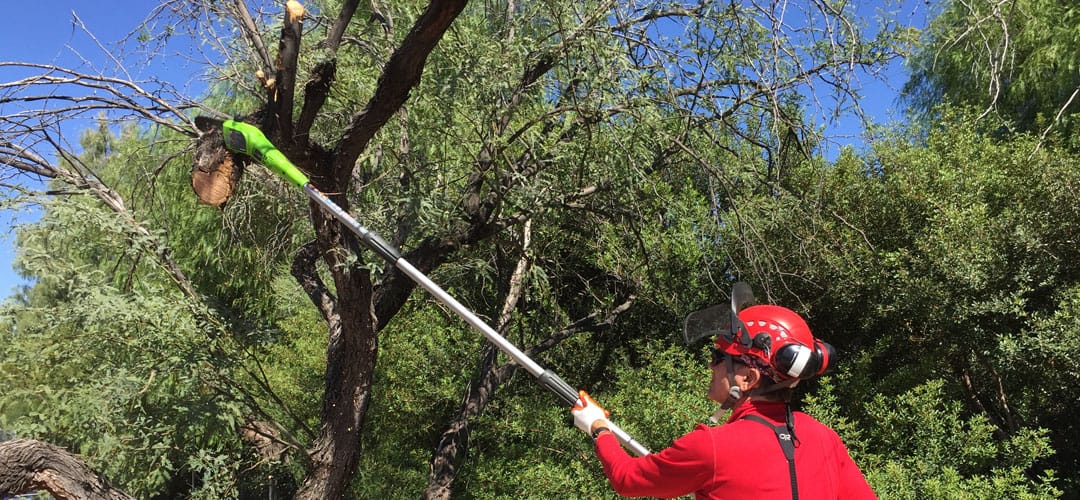
Prune out dead parts of your tree (or hire a professional arborist to do so)
Once the chance of frost is past (usually around March 15), you can finally prune out any frost-damaged parts of your plants and shrubs. I know my bougainvillea and hibiscus shrubs need it – they suffered quite a bit of frost damage this winter.
You can also prune out any dead branches from your trees and shrubs. For deciduous trees and shrubs, wait until they’re well leafed out – that will help you more easily identify which wood is dead and which is just taking its time to grow new leaves.
Evergreen trees and shrubs can also be pruned in March.
You can also prune rose bushes (if you haven’t already – ideally, the year’s major pruning will have been done in January), and deciduous fruit trees.
DO NOT prune any newly-planted trees or shrubs (wait two or three years before pruning them so they have a chance to get firmly established).
Plant fruit trees
March is ideal to plant fruit trees in your Tucson yard. Whether you want some sort of citrus tree, or you prefer a blueberry bush or apple tree, be sure to choose something that doesn’t require many “chill hours.” Learn more here.
We recommend planting fruit trees towards the beginning of March, as the temperatures are going to rise quickly and the trees need some time to adjust before the really hot weather hits!
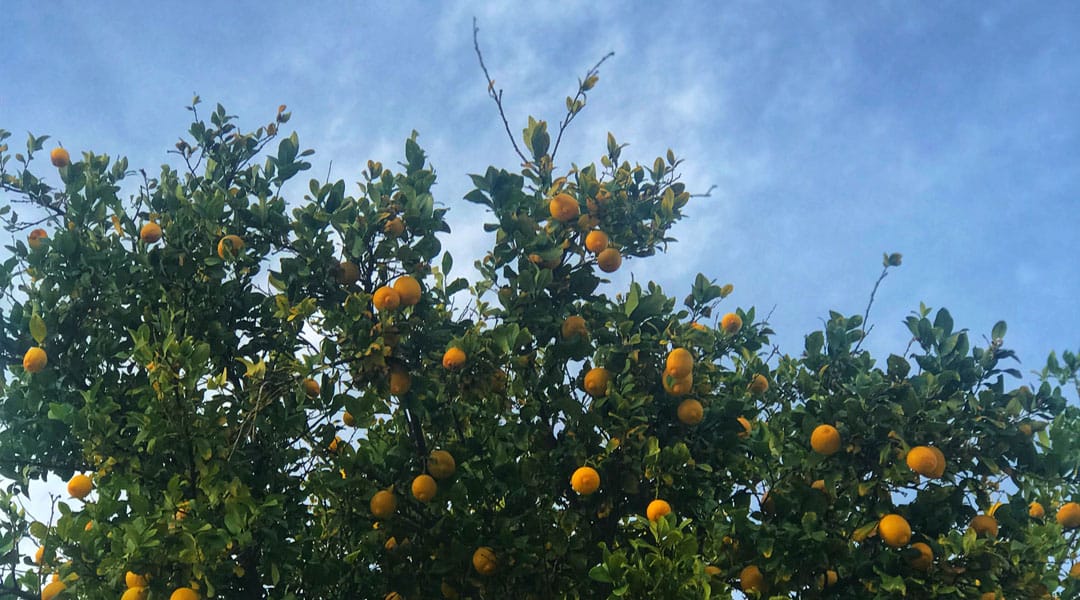
March is a great time to plant fruit trees in your Tucson yard
Sow or transplant herbs and vegetables
You can still plant edibles in your Tucson garden. Look for shorter grow times so that you don’t run up against the mid-summer Tucson heat, especially for vegetables such as cucumbers.
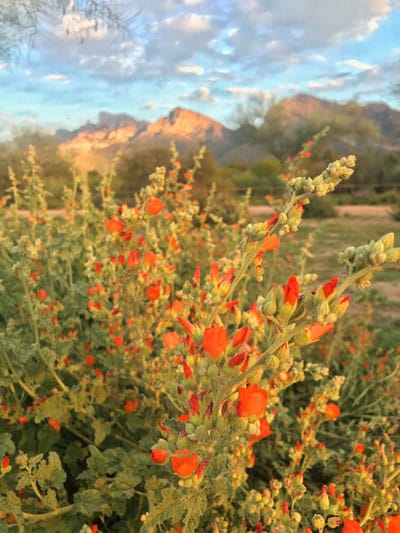
Wildflowers at a park in the Tucson area
Sow these vegetables from seed
- Amaranth
- Basil
- Bush Bean
- Corn (sweet)
- Cucumber
- Jerusalem Artichoke
- Malabar Spinach
- Melon
- Pumpkin
- Sesame
- Sorghum
- Summer and Winter Squash
- Tobacco
- Watermelon
Transplant these as seedlings
- Basil
- Eggplant
- Pepper
- Tomato
- Tomatillo
Spread mulch
One of my favorite parts of the Tucson Botanical Garden is seeing all the different types of mulch that they use, from straw to pecan shells. If you’re not sure how to use mulch, a visit to the garden will give you plenty of ideas!
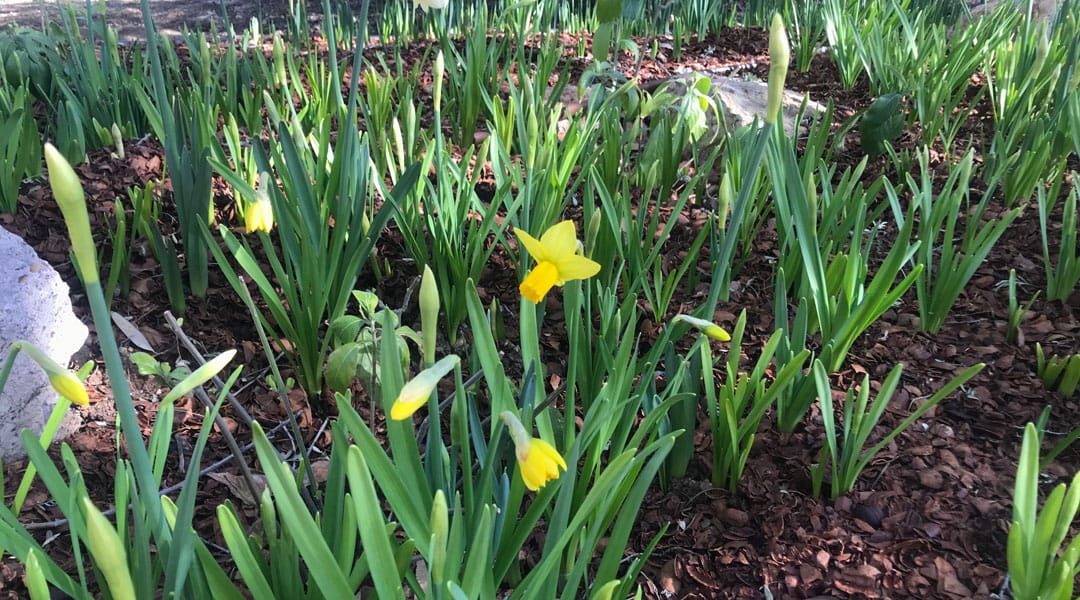
Daffodils at the Tucson Botanical Garden surrounded by mulch made from pecan shells
March is a great time to add mulch around your trees and plants. However, make sure that:
- no mulch is touching the tree trunk or the plants (pull it back a few inches from the plant), and
- you’re not adding too much mulch (2 to 4 inches is plenty in most situations).
Refrain from making a “mulch volcano,” where mulch is piled up in a way that resembles, well, a volcano. Though you may see mulch used this way as you drive around town, it’s harmful to trees (yes, mulch volcanoes kill trees!).
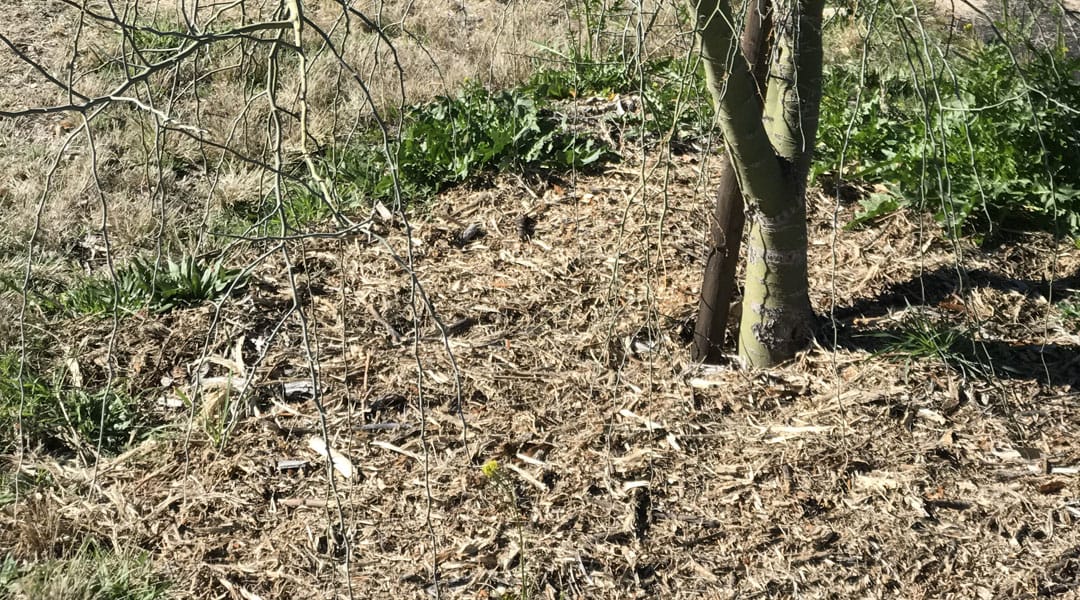
The mulch is too close to a young palo verde tree in this Tucson-area park
Why use mulch?
Mulch is helpful in regulating the temperature of the soil (it can keep soil cooler during the blazing hot summer months). Organic mulch (made from things like shredded bark, wood chips, straw, compost, pine needles, pecan shells, etc.) will break down over time, adding organic material and nutrients to the soil for the trees and shrubs to absorb. A nice layer of mulch can also keep weeds from popping up between your other plants.

Straw used as mulch around plants at the Tucson Botanical Garden
Other Yard Tasks
Now is a good time to take a look at your yard. Remove any plants that haven’t made it through the winter and decide what to plant in their place.
Note the sun, shade, and water needs of your plants and move them around as needed.
If you have an irrigation system, ensure that it is working properly, and add irrigation to any new shrubs or plants that would benefit from it (many native plants do not need irrigation once they’re fully established).
If nothing else, make sure you spend some time outdoors this month whenever you can! It’s beautiful out!
